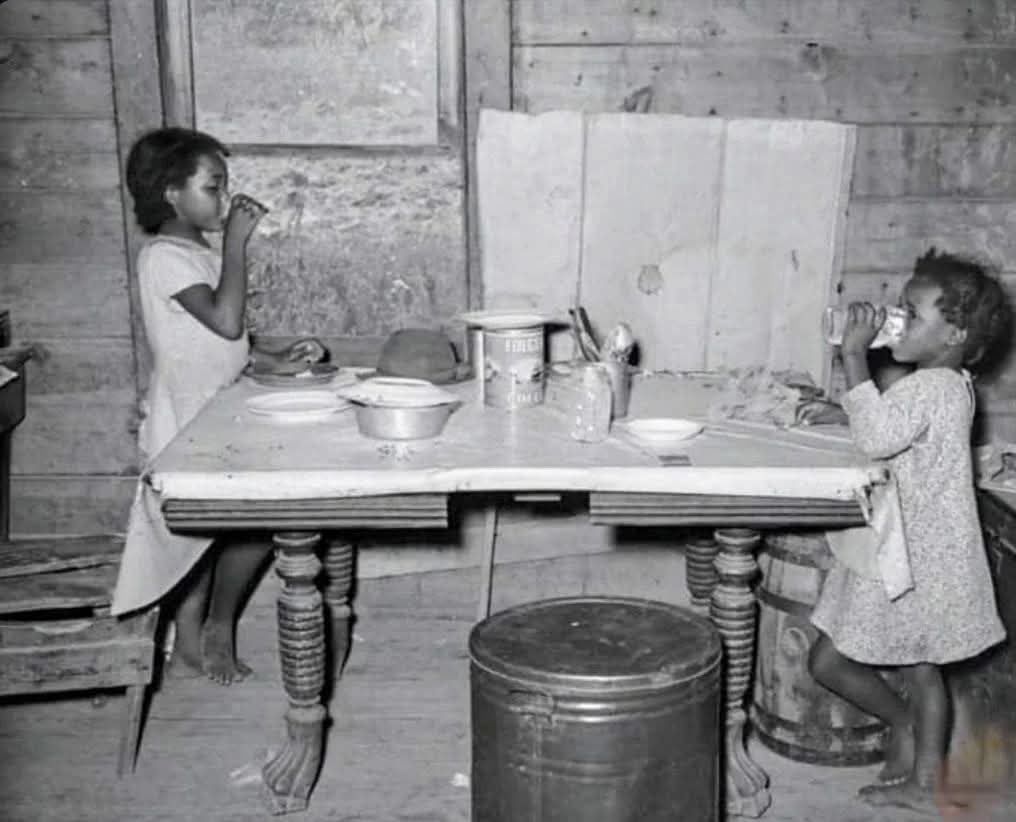All Intentions To Educate, Clips Belong To The Rightful Owners
- 1 people like this
- 154 Posts
- 132 Photos
- 24 Videos
- 0 Reviews
- People and Nations
Recent Updates
- Please log in to like, share and comment!
-
-
- Two black Children eating bread and flour gravy, Oklahoma, 1939.
Our ancestors survived with a little to nothing, their survival skills was pass down through generations, Depression” it don’t affect us as much as it does to people in some other races because we live it everyday 365 days a year,YEAR IN AND YEAR OUT.Two black Children eating bread and flour gravy, Oklahoma, 1939. Our ancestors survived with a little to nothing, their survival skills was pass down through generations, Depression” it don’t affect us as much as it does to people in some other races because we live it everyday 365 days a year,YEAR IN AND YEAR OUT.0 Comments 0 Shares 346 Views - Mother smiles as she poses with her eight children, circa 1950sMother smiles as she poses with her eight children, circa 1950s0 Comments 0 Shares 264 Views
-
-
- The captivating Pam Grier, photographed in 1974, continues to command attention fifty+ years later.The captivating Pam Grier, photographed in 1974, continues to command attention fifty+ years later.0 Comments 0 Shares 713 Views
- In 1966, Marie Van Brittan Brown, a Black nurse from Queens, New York, made history when she invented the world’s first home security system with TV surveillance. Living in a neighborhood where police response was slow, she wanted a way to feel safer at home. Her design included a camera that could move between peepholes in the front door, a monitor inside the house, and even a microphone to speak with visitors. She also built in an emergency button to alert authorities. Brown received a patent for her invention in 1969, and her groundbreaking work became the foundation for modern home security systems used across the world today. A true pioneer, she not only protected her own family but also changed the way we all think about safety in our homes.In 1966, Marie Van Brittan Brown, a Black nurse from Queens, New York, made history when she invented the world’s first home security system with TV surveillance. Living in a neighborhood where police response was slow, she wanted a way to feel safer at home. Her design included a camera that could move between peepholes in the front door, a monitor inside the house, and even a microphone to speak with visitors. She also built in an emergency button to alert authorities. Brown received a patent for her invention in 1969, and her groundbreaking work became the foundation for modern home security systems used across the world today. A true pioneer, she not only protected her own family but also changed the way we all think about safety in our homes.0 Comments 0 Shares 641 Views
- 𝘾𝙖𝙥𝙚 𝙑𝙚𝙧𝙙𝙚𝘾𝙖𝙥𝙚 𝙑𝙚𝙧𝙙𝙚 🇨🇻0 Comments 0 Shares 315 Views
More Stories










